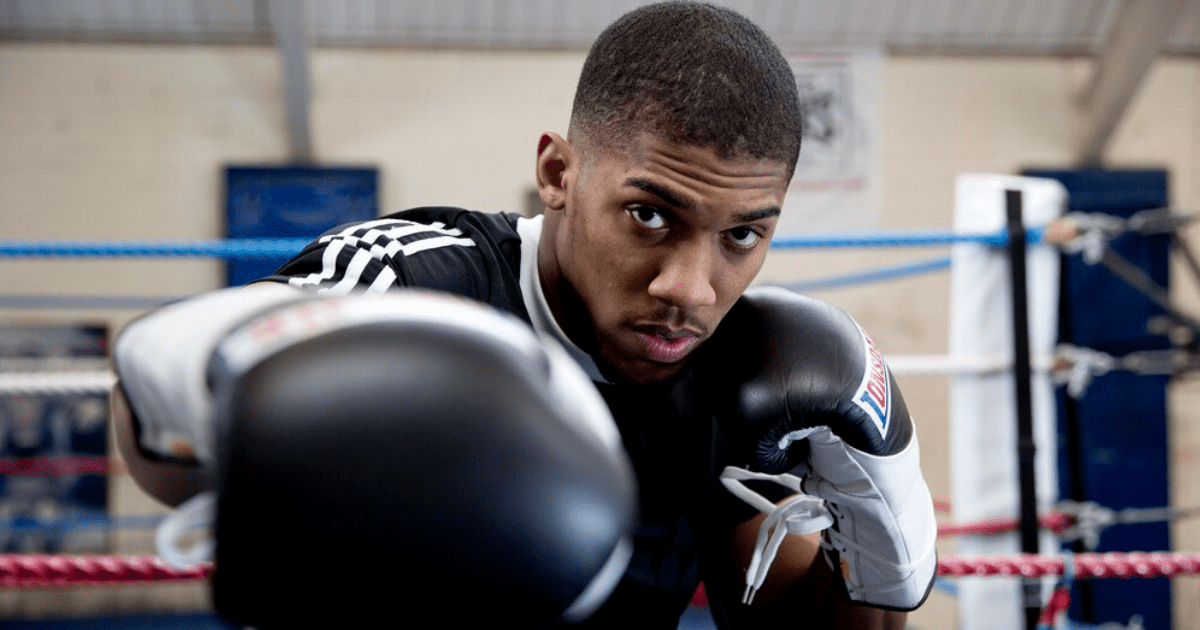ANTHONY JOSHUA has warned kids his former life of crime keeps coming back to haunt him every time he tries to enter the USA in a bid to keep them on the straight and narrow.
AJ, 33, got into his fair share of trouble as a youngster and once found himself on remand in Reading prison for “‘fighting and other crazy stuff.”
Anthony Joshua got into his fair share of trouble as a youngster and was even charged with intent to supply class B drugs
AJ escaped jail time and was able to pursue his dream of becoming world champion
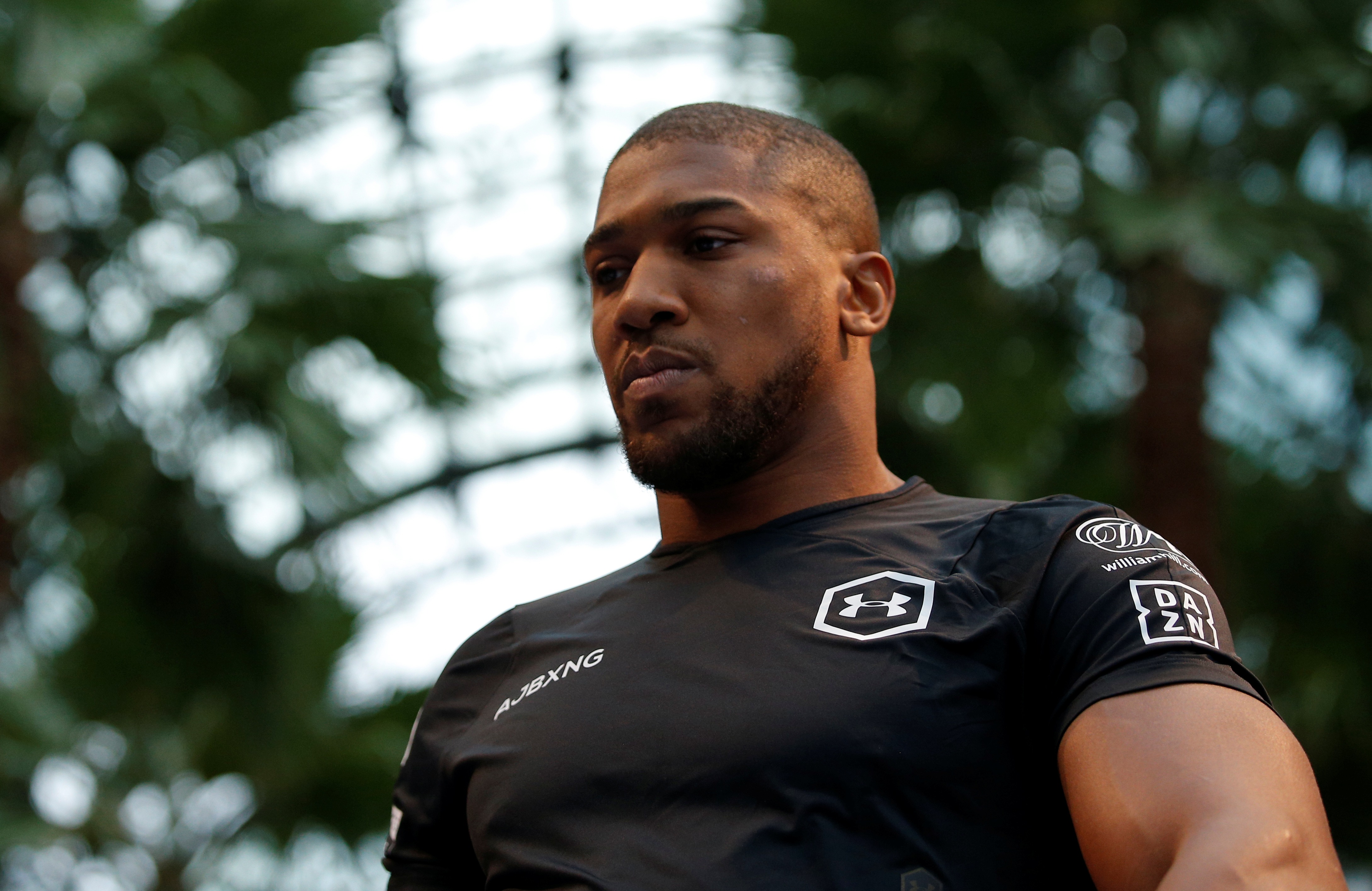
But he admits his former life comes back to bother him when he tries to enter the USA
His world was almost turned upside down in 2011 when he was charged with possession with intent to supply a class B drug after police found a large amount cannabis in his car.
Joshua avoided jail time by submitting a guilty plea, although his criminal record keeps coming to the fore when he tries to enter the United States.
He said: “A message to the youth: When I was younger…. used to get in trouble.
“I’m telling you, it catches up with you. You can’t run away from your past.
“Every time I step into the USA, they pull me into the US Customs and Border Protection.
“Luckily, certain things with my criminal record aren’t too severe and they don’t stop me from actually entering.
“But every time I enter the USA, they pull me over for questioning and it’s tedious and time-consuming.”
Joshua, 33, has been open about his former life in a bid to steer kids off the wrong path, including his willingness to spend 15 years behind bars when he was on remand.
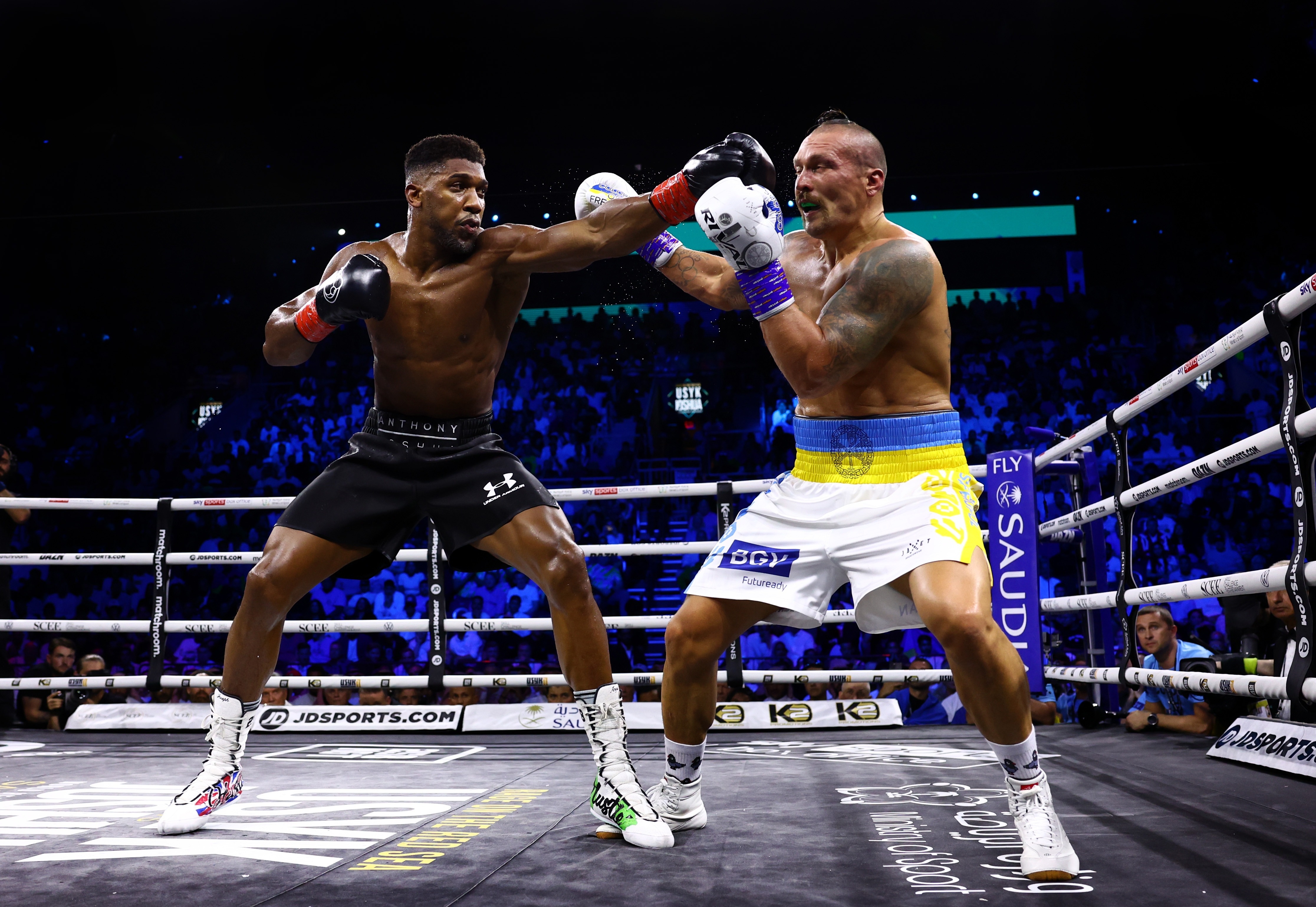 Anthony Joshua is the rebuilding phase of his career following back-to-back losses to Oleksandr Usyk
Anthony Joshua is the rebuilding phase of his career following back-to-back losses to Oleksandr Usyk
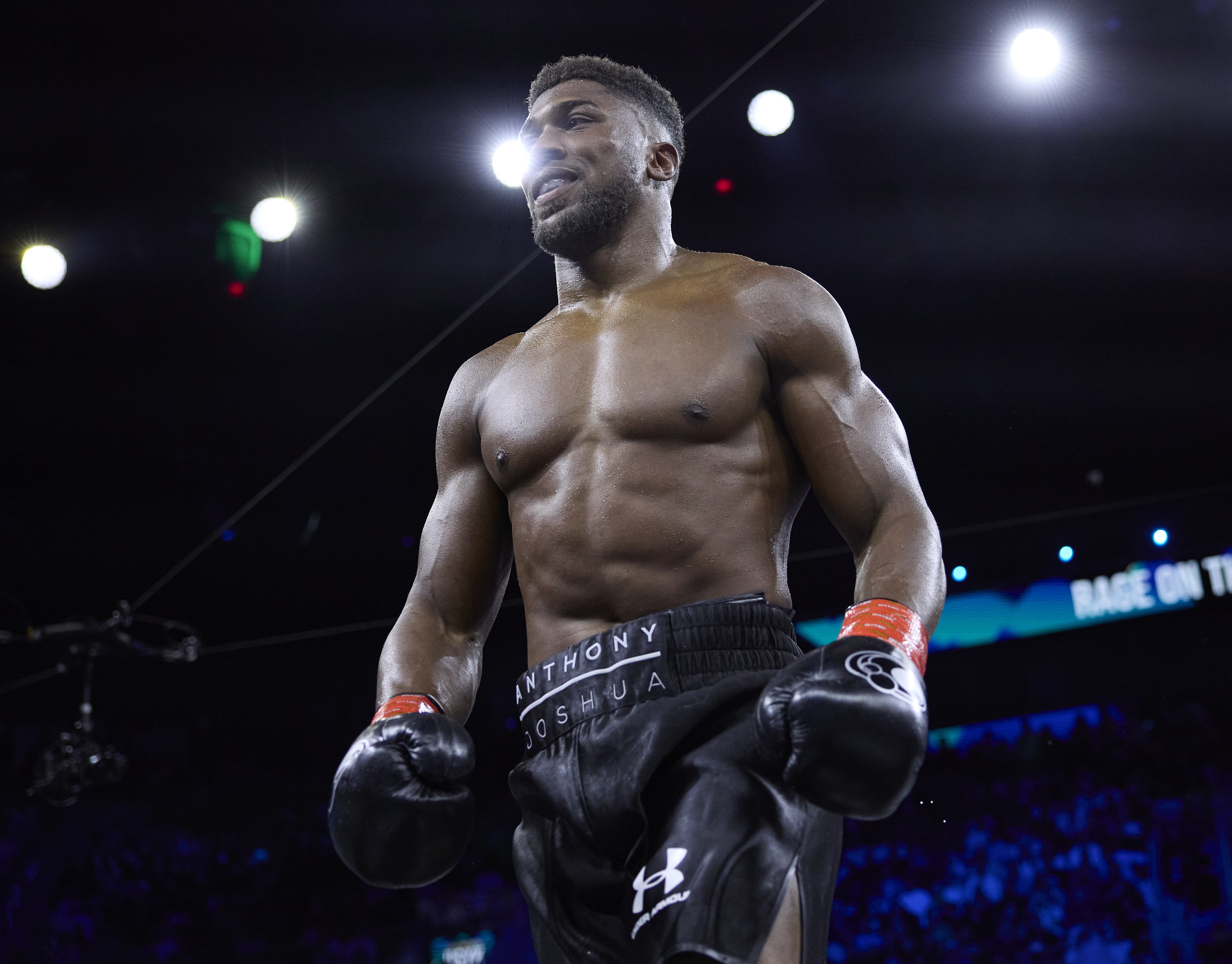
The former two-time heavyweight champ is currently out of the world title picture
During an appearance on Apple’s Song for Life, he said: “I feel like I was looking at 15 years.
“I thought I’d do that easy. I would have been out maybe two years ago [2018].
“So I was like, ‘Cool. No problem. If it is guilty, it’s guilty.'”
Joshua knuckled down and focused on boxing after escaping prison time for drug possession, which would’ve derailed what has turned out to be a glittering career.
Recalling the aftermath of his almost life-altering brush with the law, he said: “I done my community service, I got banned from the Olympic team though, which was a tough time.
“I learned how to get smarter, I changed my car, too flash, and that’s why I think now as a boxer I know how to keep low key.
“I learned the art of bouncing back, most important.”
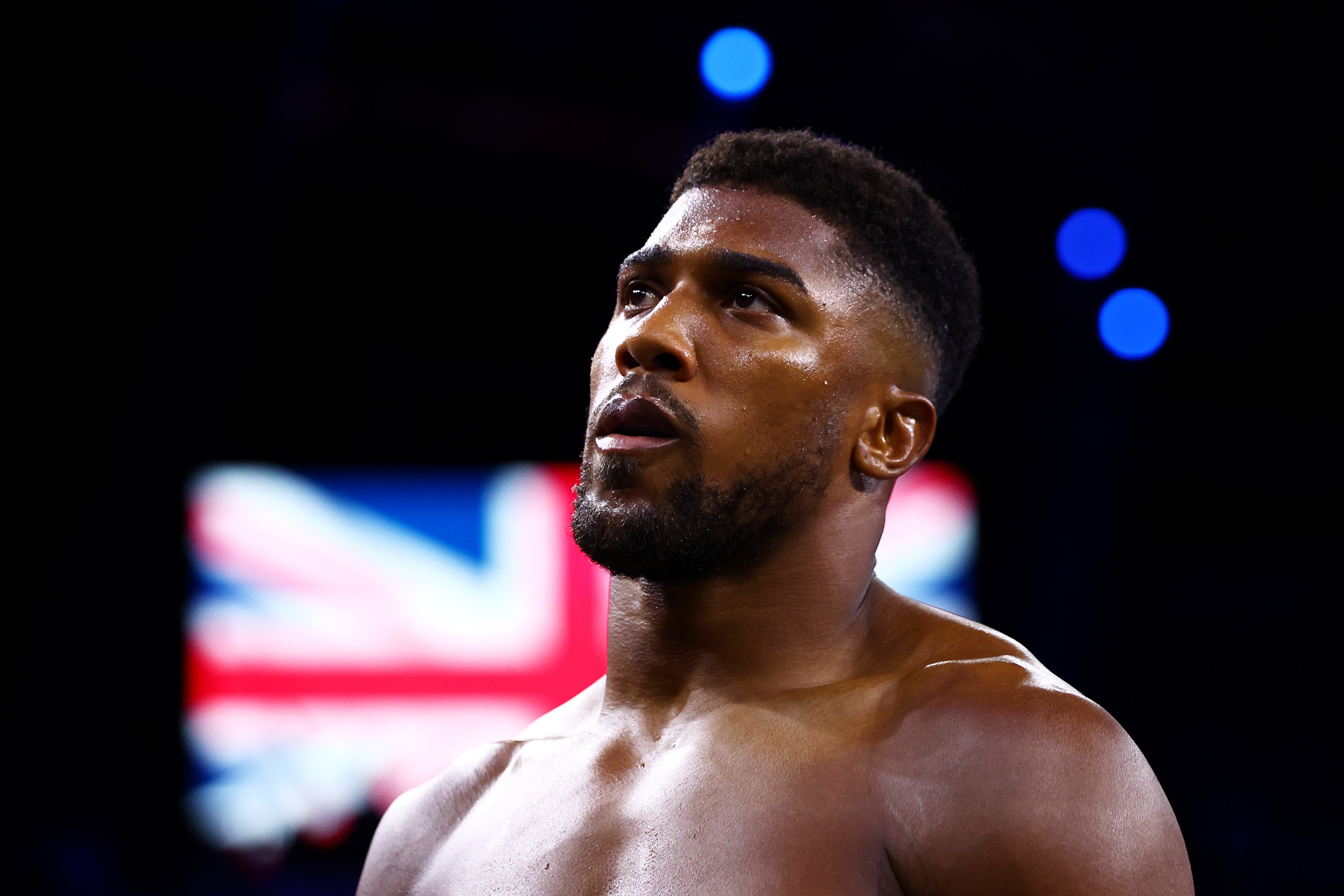
Anthony Joshua is set to return to the octagon early next year
Joshua is set to return to the ring in early March following his defeat in his rematch with unified heavyweight champ Oleksandr Usyk in August.
An opponent hasn’t been finalised, although dust-ups with Otto Wallin and Brit rival Dillian Whyte are on the cards.
Frequently Asked Questions
What are the main types of boxing glove?
There are three main types for boxing gloves: mitts or fingerless mitts. Mitten gloves have padding around the knuckles. Fingerless mitts do not have padding around the knuckles, but they still cover the fingers. Full-fingered gloves have padding around the entire hand.
Mittens can be used for hitting the fist with your fist. Fingerless mitts gloves are designed for striking or punching with your index finger’s index finger. Full-fingered boxing gloves are used for punching with the whole fist.
How long does it take for you to master boxing?
Boxing is one among the oldest martial arts known. The first recorded boxing match was held in China around 2200 BC. Boxing has been practiced for thousands of years. Today, boxing is still loved by celebrities and athletes. Boxing takes 10 months to master.
Because boxing involves so many movements, it is slow to learn. Each movement requires a specific set of muscles to work properly. It takes time and effort to build these muscles.
You can learn how to move your body and then you can begin practicing any type boxing technique. And over time, you’ll become more skilled at each technique.
What are the 7 punches in boxing?
There are seven boxing punches. They include jab and cross, hook and uppercut, straight right and left hook, as well as body shot. These punches attack the opponent’s head or body.
Statistics
- It is just like normal sparring with a partner, but you want to throw punches at 75% of your normal speed. (wikihow.com)
- You want to be running at roughly 75-80% of your top speed..5 mile slow, easy recovery jog at the end.[6]X Research source 2Mix in long runs, shadow boxing, and short sprints on non-interval days. (wikihow.com)
External Links
expertboxing.com
en.wikipedia.org
How To
Here are the Basic Skills of Boxing
How to effectively box
Boxing is one of the most popular sports in the world. It is a fight between two opponents. Boxing rules vary from one country or another. There are three main types of boxing: Amateur boxing, Professional boxing, and Olympic boxing.
Amateur boxing usually takes place at school, college and university. This boxing style includes sparring sessions without protection, using padded gloves. Usually amateur boxing competitions consist of three rounds of five minutes each. There are many different styles of amateur boxing including Kickboxing, Muay Thai, Taekwondo, Karate, Judo, Wrestling and others.
Boxing is typically practiced in clubs, stadiums or gyms. They are equipped with protective equipment including a mouthpiece and nose guard, shinguards as well as elbow pads, knee pads. Waist belts and groin protectors. Professional boxing competitions have six rounds that last four minutes each. There are several different styles of professional boxing including Boxing, MMA (Mixed Martial Arts), Kickboxing, Muay Thai, Taekwondo and others.
Olympic boxing is done at the Olympics. Special protective gear must be worn by boxers to ensure compliance with international standards. Each round lasts three minutes and is made up of eight rounds. Olympic boxing is limited to two styles: Light Flyweight and Heavyweight.
Boxing is based on the following skills:
- Punching techniques
- Guarding techniques
- Footwork
- Stance
- Moving your body
- Defense
- Combination
- Rotation
- Spares
Punching Techniques
There are seven types. Each punch has its own technique. Some punches need more power than others. A strong uppercut for example requires a lot of force. On the other hand, a straight punch requires less power but it is faster than other punches.
There are also various punching combinations. These are combinations which combine several punches in order to achieve a specific goal. An entire combination could have several parts. A left hook followed with a right-cross will cause injury to the opponent’s jaw.
Guard Techniques
Boxers protect themselves by protecting their bodies. He uses his arms, legs, elbows, knees, knees, and feet to do this.
Legs
A boxer must use his legs to defend against kicks. After receiving a kick, he will raise his leg and move away from the attacker. To avoid being kicked in the side, he bends down if the attacker attacks from the front. If the attack is from the side, he will bend his knees to avoid being kicked on the side.
Elbows
Because they inflict pain, elbow strikes can be very effective. An elbow strike can be delivered either directly or indirectly. Directly means you hit your opponent directly with your forearm. While indirectly, it means you hit him with another section of your arm.
Hands
Boxers use their hands as a shield against incoming punches. They raise their fists high above their heads and point them in the direction of an attack. The attacker’s fist is then in their face.
Knees
To absorb the impact of a punch to the stomach, abdomen, or chest, boxers should bend their knees. For defense purposes, knee strikes are common.
Feet
A boxer should not be afraid to respond to an attack. This way, he can gain distance between himself and his opponent. A boxer must also maintain his balance when responding to an opponent’s counter-attack.
Stances
To box effectively, a boxer must establish a stance. His stance determines how he defends himself. It dictates how he places his body and faces his opponent. Boxers have many options for stances. Here are some of the most common ones:
- Low stance
- High stance
- Southpaw stance
- Western stance
Body Movement
To win a fight, a fighter must move around the opponent. This requires changing your position, speed, and rhythm.
Rotation
Rotating his arm to increase the puncher’s reach is a key part of boxing. Different types of punches require different speeds for the rotation.
Combinations
Timing of each punch is crucial to the effectiveness of a combination. A combination that is effective starts with a strong punch, and ends with one that is weak.
Spares
Sparring is a training session that improves boxing skills. Boxers learn to train their mind and bodies during sparring sessions. The purpose of sparring is, in short, to learn how fight and not get hurt.
In conclusion, learning to box requires dedication and patience. Boxing is a sport that requires dedication and perseverance.

